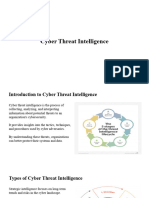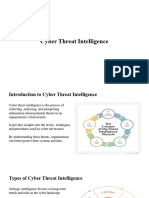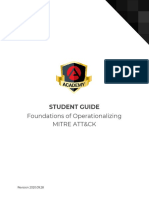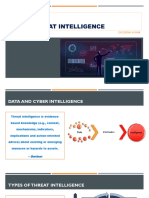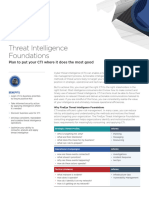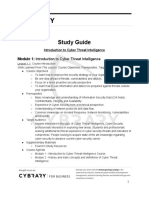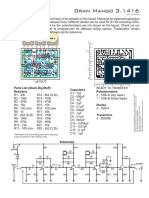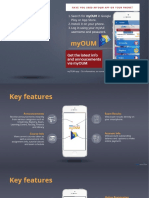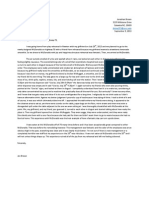0% found this document useful (0 votes)
27 views4 pagesThreat Hunting Assignment Formatted
The document provides an overview of Cyber Threat Intelligence (CTI), emphasizing its importance in modern cybersecurity for proactive threat detection and incident response. It outlines various types of CTI, sources of intelligence, and introduces the MITRE ATT&CK framework, which helps map adversary behaviors for effective threat hunting. The report also discusses the techniques used by the APT38 group, highlighting the significance of CTI in enhancing organizational defenses against cyber threats.
Uploaded by
thundernk1Copyright
© © All Rights Reserved
We take content rights seriously. If you suspect this is your content, claim it here.
Available Formats
Download as DOCX, PDF, TXT or read online on Scribd
0% found this document useful (0 votes)
27 views4 pagesThreat Hunting Assignment Formatted
The document provides an overview of Cyber Threat Intelligence (CTI), emphasizing its importance in modern cybersecurity for proactive threat detection and incident response. It outlines various types of CTI, sources of intelligence, and introduces the MITRE ATT&CK framework, which helps map adversary behaviors for effective threat hunting. The report also discusses the techniques used by the APT38 group, highlighting the significance of CTI in enhancing organizational defenses against cyber threats.
Uploaded by
thundernk1Copyright
© © All Rights Reserved
We take content rights seriously. If you suspect this is your content, claim it here.
Available Formats
Download as DOCX, PDF, TXT or read online on Scribd
/ 4





